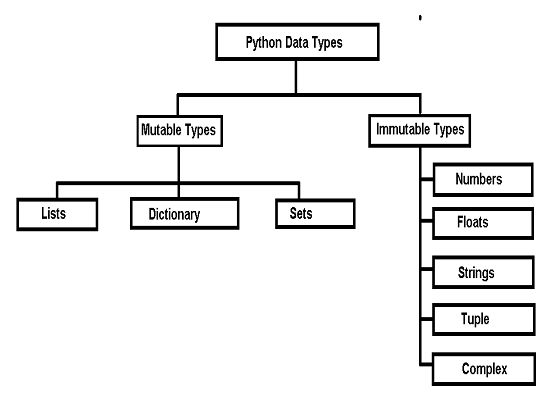Introduction
Python is an object-oriented programming language (or OOP). In my previous article, we explored its versatile nature. Because of this, Piton Python offers a wide variety of data types, which can be broadly categorized into mutable and immutable types. However, as a curious Python developer, I hope you are also wondering how these types work. Concepts impact data. How is data processed and manipulated in memory? How has it affected the quality of the program? This article will provide a comprehensive overview of mutable and immutable objects in Python and why they are crucial for effective programming. We will explore how mutability and immutability work on different Python objects such as primitive data types like integers, floats, strings, etc., and built-in data types like lists, dictionaries, sets, tuples, etc.
What is mutability versus immutability?
From a high-level perspective, mutability refers to the ability of any object to be modified, changed, or updated after it has been created. This means that if an object is mutable, its state or contents can be changed without creating a new object.
On the other hand, immutability means that once an object is created, its state cannot be changed, modified, or updated. Any changes to these objects create a new object with a different memory allocation rather than altering the existing one.
What are mutable and immutable objects in Python?
The following image shows that Python's rich data types can be divided into two categories: mutable and immutable objects, which are then further divided.

Comparative analysis of Python data types
Let's take a look at a comparison between all the built-in data types:
| Data type | Mutable/Immutable | Description | Use case |
| Integers | Immutable | Integers (e.g. 1, -5, 42). | Use when working with numerical data that does not change. |
| Floats | Immutable | Numbers with decimal points (for example, 3.14, -0.001). | Useful for scientific calculations, financial data, etc. |
| Booleans | Immutable | Logical values: True or False. | Conditional checks, logical operations. |
| Strings | Immutable | A sequence of characters (e.g., “hello,” “world”). | It is used for text manipulation, document processing, etc. |
| Tuples | Immutable | Ordered collection of elements (for example, (1, 2, 3)). | Suitable for constant data, can be used as dictionary keys. |
| Frozen sets | Immutable | An unordered collection of unique objects, an immutable version of a set. | It is used in cases where the set needs to be constant and hashable. |
| Complex numbers | Immutable | Numbers with real and imaginary parts (for example, 1 + 2j). | It is used in scientific computing, signal processing, etc. |
| Liza | Mutable | Ordered collection of elements (for example, (1, 2, 3)). | Use it when you need to modify, add, or delete items frequently. |
| Dictionaries | Mutable | Collection of key-value pairs (for example, {“name”: “John”, “age”: 30}). | Ideal for mapping relationships, searching, and data storage. |
| Sets | Mutable | Unordered collection of unique elements (for example, {1, 2, 3}). | It is best used for testing memberships, removing duplicates, etc. |
| Custom objects (classes) | Mutable/Immutable | The behavior depends on how the class is defined (mutable by default). | Custom behavior based on requirements; you can control mutability. |
To understand these concepts in a more Pythonic way, check these out:
- Primitive data types are “immutable” – Link
- Python's built-in data structures are “mutable” Link
In these articles, I have discussed the mutability and immutability of these data types, “ID” function, shallow and deep copy, and much more, along with codes.
Note:However, I recommend checking those codes only after reading this article. This article improves your understanding of “What happens inside the memory space?”
What happens at the memory level?
When talking about memory-level immutability, an immutable object cannot be altered directly. Any operation that appears to modify an immutable object creates a new object with the modified value in memory. Mutable objects share the same previously allocated memory. Changes to these objects occur in-place, modifying the contents of existing memory without a new allocation.
Before we explore this further, let's first understand the two most common concepts about removing objects from memory.
- Deallocation means that the system frees up memory previously occupied by an object and makes available for other uses.
- Garbage collection is a process in Python that automatically finds and frees memory that is no longer used by the program, especially for objects that reference each other in a loop.
How does object removal work?
Python memory management relies on two main elements: reference counting and garbage collectors, to manage object disposal. Let's understand them one by one:
- Reference count: Python keeps track of the number of references that point to each object. This is called reference counting.
- Cyclic references — Garbage collection: Python also has a garbage collector that handles cyclic references. Sometimes, objects reference each other in a loop. When the reference count drops to zero, the memory occupied by the object is deallocated. For example, object A references object B, and object B references object A. Even if no other part of the program needs these objects, their reference counts never drop to zero because they reference each other. This is where the garbage collector comes in.
How is program performance determined?
In terms of performance implications, mutability and immutability have significant differences. Immutable data types are generally faster to access and process. Python can optimize memory usage by reusing immutable objects, especially if you work with small integers and strings throughout the program.
Mutable data types are more flexible, but they can introduce additional overhead due to the need to dynamically resize memory space. For example, lists in Python are dynamic arrays because they are stored in a way that allows them to grow and shrink in size as operations such as adding or removing elements are performed.
Conclusion
In conclusion, understanding the difference between mutable and immutable objects is critical to writing efficient and reliable code in Python. For example, immutability offers security when data must not change, such as in key-value mappings or concurrent programming.
In contrast, mutability is useful in situations where dynamic updates to data structures are needed for that specific part of the program. Knowing when to use each thing is essential to understanding the trade-offs in terms of performance and complexity, which ultimately leads to writing maintainable programs.
Also Read: Complete Guide to Python's Built-In Data Structures
Frequently Asked Questions
A. Mutable objects, such as lists or dictionaries, offer the flexibility of being modified in-place after their creation. Meanwhile, immutable objects, such as tuples or strings, cannot be modified after their creation in the same memory allocation.
A. Strings are immutable to optimize memory usage and allow safe sharing between different parts of the program. This reduces memory usage for frequently used strings and simplifies reasoning about string handling in multithreaded environments.
A. Immutable objects can lead to faster performance because they are easier to manage in memory. Python can reuse immutable objects, which reduces the overhead of repeatedly creating new objects. This provides insight into the benefits of memory management.
 NEWSLETTER
NEWSLETTER





